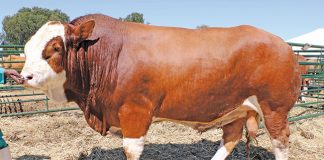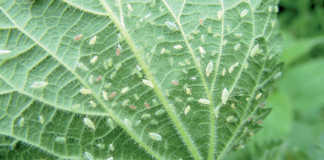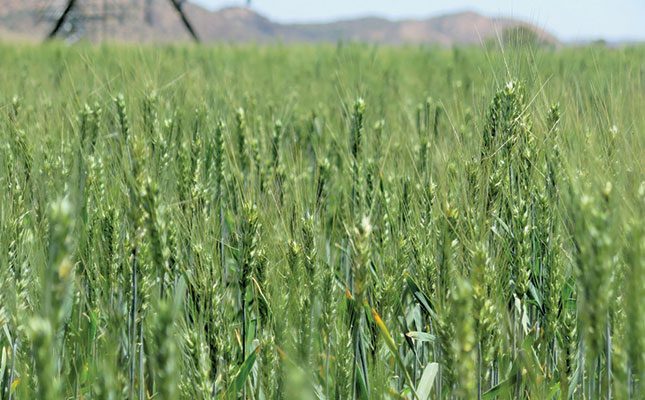
Photo: Zunel van Eeden
South Africa is the largest wheat producer in Sub-Saharan Africa after Ethiopia. Due to an increase in wheat demand to feed the growing populace, production needs to intensify.
However, intensified agriculture through monoculture farming is the main threat to diverse ecosystems, creating ideal habitats for economically important pests to establish, reproduce and cause damage.
READ Management of important grain diseases
Approximately 75% of South Africa’s wheat is produced under dryland conditions and the remaining 25% under irrigation. Winter wheat produced on dryland in the Western Cape accounts for about 50% of the country’s total production.
In the winter rainfall area, wheat is planted between mid-April and mid-June and in the summer rainfall area (eastern Free State) between mid-May and the end of July.
Russian wheat aphid (Diuraphis noxia) is the most serious wheat pest in South Africa and most problematic in drier, low yield-potential conditions.
Russian wheat aphid is indigenous to central Asia, southern Russia and countries bordering the Mediterranean Sea, Iran and Afghanistan. However, this pest is now found in all wheat production regions of the world, with the exception of Australia.
In South Africa, it was first recorded in the Free State in 1978, but now occurs throughout the region. It only reaches pest status regularly in the central dryland regions of South Africa.
How to identify Russian wheat aphid
The Russian wheat aphid nymph resembles the wingless adult female, but has a smaller body.
The nymph develops rapidly and moults four times within a time frame of seven to 20 days before reaching the adult stage. The adult is small, about 2mm in size, and has a yellow-green to grey-green and waxy appearance.
The adult has an extremely short antennae, about a quarter of its body length. Females can have wings or not. Both of these are similar to each other, except that the thorax and head of the winged form is darker.
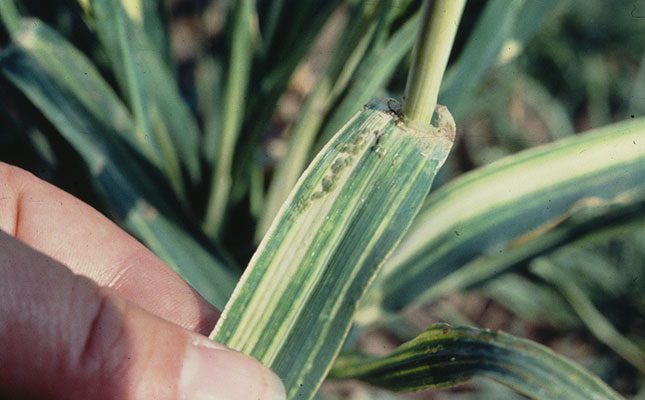
Females produce up to four live young a day, totalling approximately 70 over their lifespan. There are numerous generations every year, with a build-up of vast numbers, especially in cool to warm, dry conditions.
Initially, all the aphids in the colony are usually wingless. However, as the numbers increase, overcrowding results and winged individuals are produced so that the Russian wheat aphid may disperse to other favourable habitats to start new colonies.
The combination of their high dispersal rate and high reproductive rate means that the pest can rapidly reach damaging levels over wide areas if not properly managed.
Russian wheat aphid females are parthenogenetic, meaning they do not need to mate to produce young, and males are absent in Southern African populations. Males are only known to occur in cold climates at high altitudes.
Host range
This aphid feeds primarily on the small-grain cereals, i.e. wheat (Triticum aestivum), barley (Hordeum vulgare), and, to a lesser extent, on rye (Secale cereale), oats (Avena sativa) and triticale (a man-made species developed by crossing wheat and rye).
A variety of wild grasses can serve as host plants for the Russian wheat aphid and may be important for aphid survival when cereal crops are not available.
Cool-season grasses that host this insect include bromegrass (Bromus diandrus), wild ryes (Elymus sp.) and jointed goatgrass (Aegilops cylindrica).
Jointed goatgrass is exceptionally suitable because of its close relationship with wheat. Additional hosts recorded in South Africa include rescue grass (Bromus catharticus), other Bromus spp. as well as wild barleys (Hordeum murinam and Hordeum sp.).
Russian wheat aphid feeds on the upper-leaf surface of new growth, in axils of leaves, or within rolled leaves using their piercing-sucking mouthparts to suck sap from the vascular tissue.
During this process, saliva is secreted into the plant, causing damage to plant cells. Yield losses of 35% to 90% have been recorded on susceptible wheat plants, with the percentage infestation, growth stage of the plant and the duration of the infestation determining the severity of the damage.
Heavy infestations in young plants cause tillers to become prostate and leaves to roll closed tightly.
In older plants, typical symptoms include white or pale-yellow stripes which can turn purple when cold conditions prevail, tightly rolled leaves and heads trapped in the rolled flag leaf.
Alternative control measures
Addressing the challenge of Russian wheat aphid in South Africa requires a multifaceted approach that combines host plant resistance, and biological, cultural and chemical control strategies.
Integrated pest management practices can help reduce the reliance on chemical pesticides and mitigate the impact of this pest.
The integration of several control measures is most effective when trying to combat this pest.
A number of natural enemies have been associated with Russian wheat aphid. Parasitic wasps include indigenous species of the families Braconidae and Aphelinidae with two exotic species, Aphidius matricariae and by chewing a hole through the host’s exoskeleton.
Parasitoid females feed on plant nectar and honeydew, a sugary liquid secreted by aphids and other sap-feeding insects.
They also feed on aphids to obtain nutrients for egg production by piercing or “stinging” the aphids with their ovipositor and drinking the insect’s blood from the wound, killing about two aphids per day by such feeding. Predators may include many species of ladybird beetles.
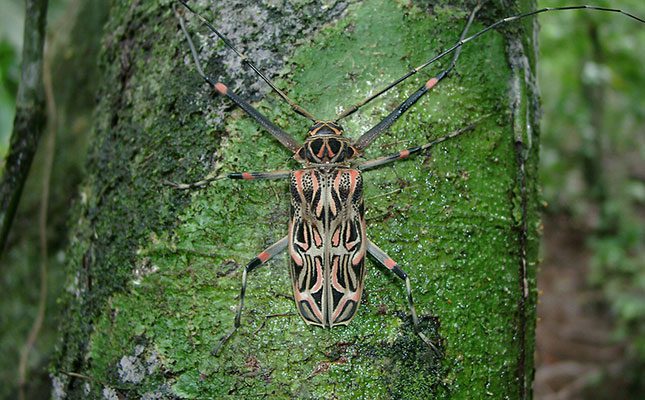
Wikimedia Commons
This includes the variegated ladybug, Hippodamia variegata, which was accidentally introduced into South Africa from the UK.
Other species include the alien invasive harlequin beetle, Harmonia axyridis, and other predaceous beetles. Ground beetle predators prey on aphids that have dropped from plants due to disturbance.
Lady beetle predators may cause aphids on the plants to fall from the plant onto the ground, where they are consumed by carabid predators. Both adult and larvae of ladybirds are voracious predators of aphids.
This predation helps to reduce the number of Russian wheat aphids in infested fields.
Hymenopterous parasitoids are more commonly found when aphid population densities are low, while beetles occur when higher population densities are present.
Conservation biological control is becoming increasingly important for pest control to avoid adverse effects associated with the use of on-farm inputs. Farmers should aim to implement practices to minimise the “green bridge” of volunteer and alternate grass-host species, on which aphids survive from one season to the next.
The destruction or removal volunteer host plants can help reduce or delay the build-up of Russian wheat aphid populations. Conventional systems that are surrounded by, or in close proximity to uncultivated land, which has different grass species, may increase aphid densities in these systems.
Lower abundances of aphids have been found to appear in organic and diversified systems due to higher predator abundances in these systems.
Organic Systems
Organic and diversified cropping systems resemble natural ecosystems in that there are no chemical practices, while there is a diversity of different plants.
Increasing agricultural habitats with high crop rotation, polyculture and cover crops are advantageous to natural enemies and their efficacy of biological pest control of miscellaneous pests such as Russian wheat aphid.
Abiotic factors such as temperature, relative humidity and rainfall influences the density of pests and their natural enemies’ abundance, as well as plant health.
Therefore, the maintenance of adequate soil moisture and fertilisation can reduce damage because plants stressed for water or nutrients are more susceptible to damage from pests.
Available resistant cultivars should be planted and fields inspected regularly as it may be necessary to use chemical control against the aphids should the populations increase.
When applying chemical control, it must be done mindfully, because spraying unnecessarily will interfere with the natural enemies of the aphid.
Conclusion
Wheat pests jeopardise both the quantity and quality of this crop. The consequences extend beyond financial losses for farmers, impacting food security and the nation’s ability to meet its wheat needs independently.
A comprehensive and sustainable approach to pest management is imperative.
Email Zunel van Heerden at [email protected].









